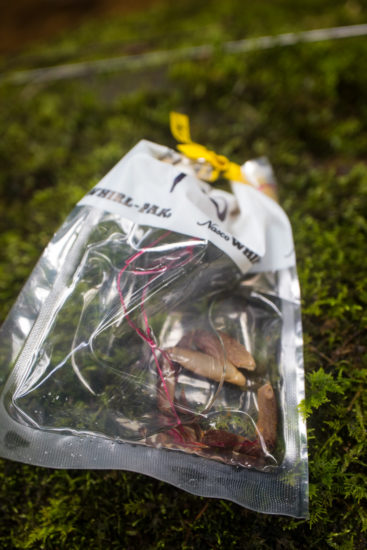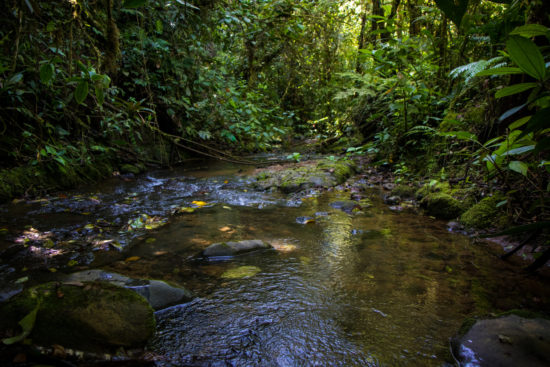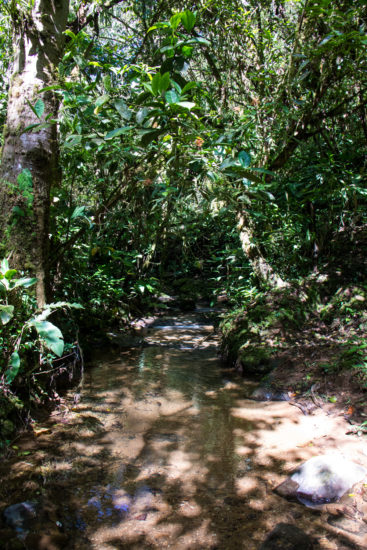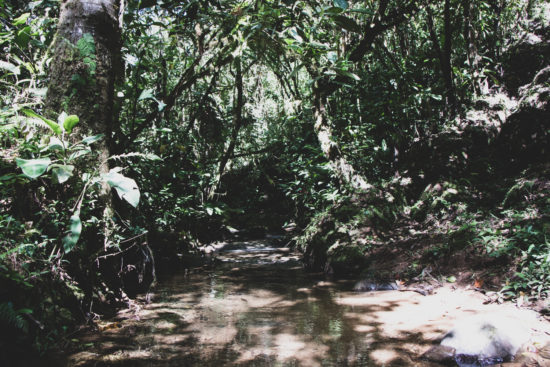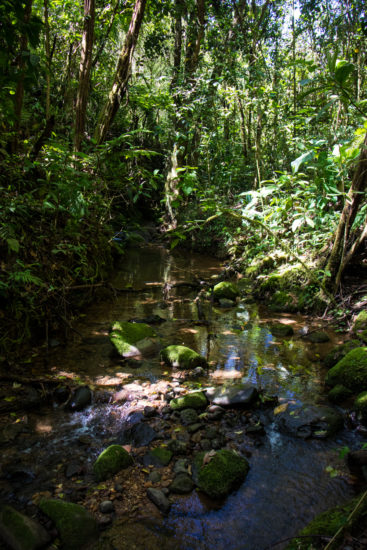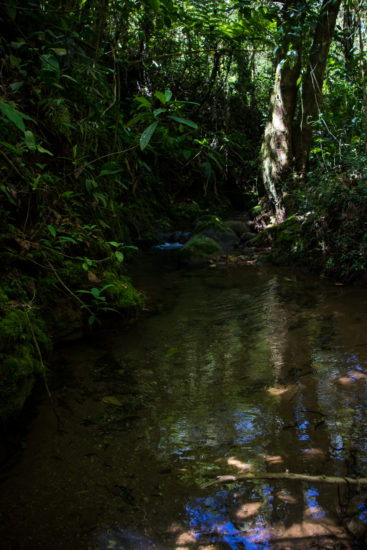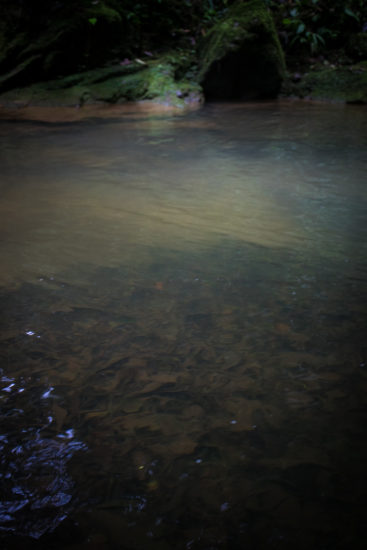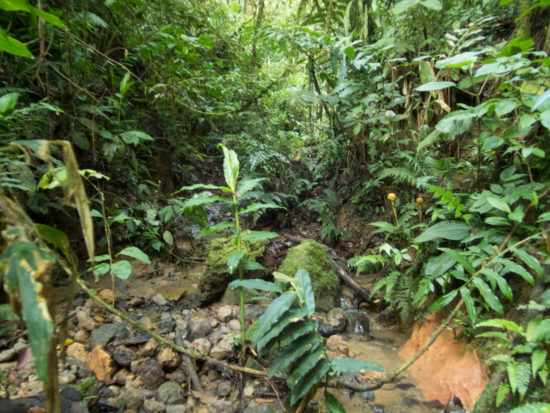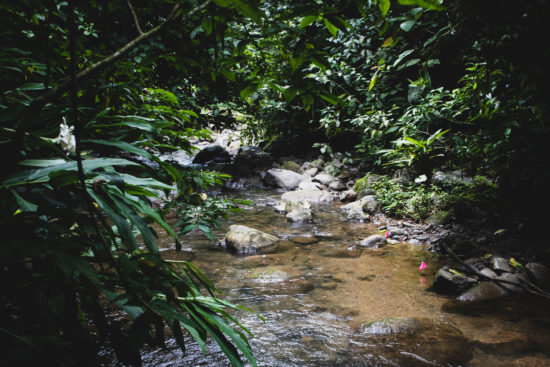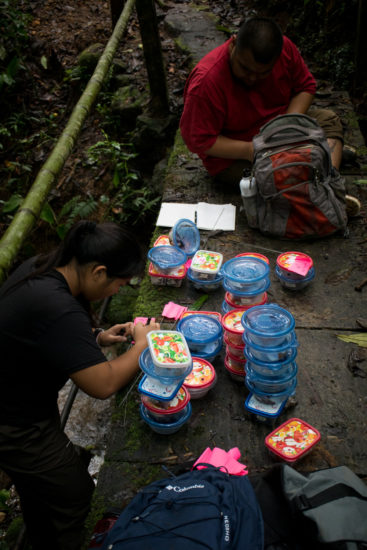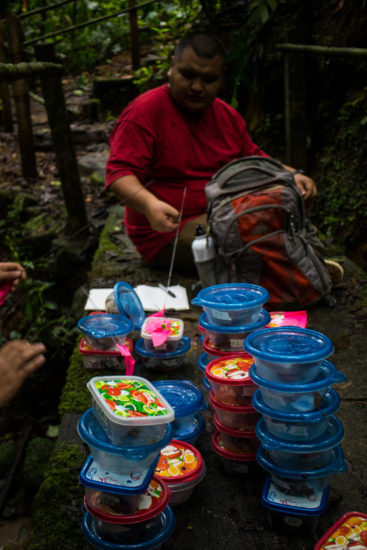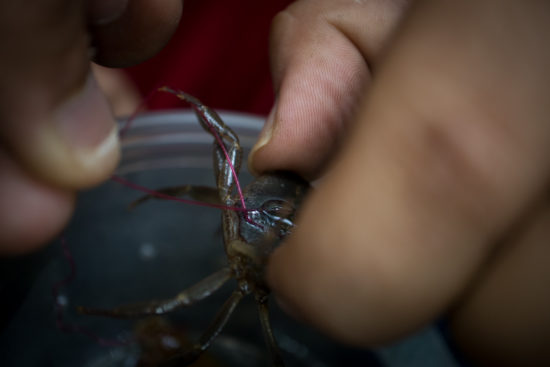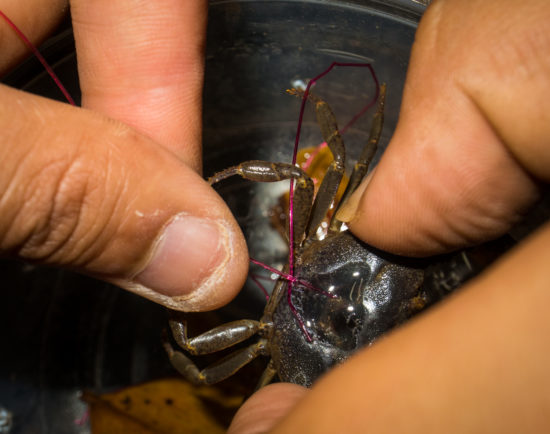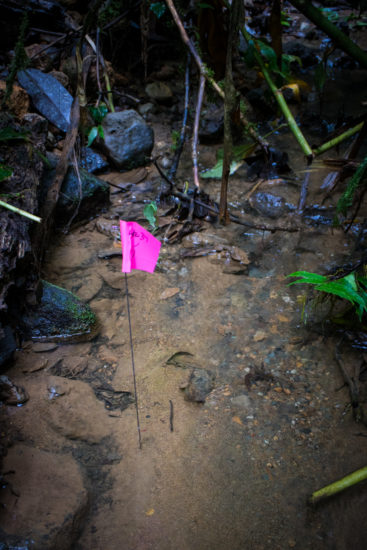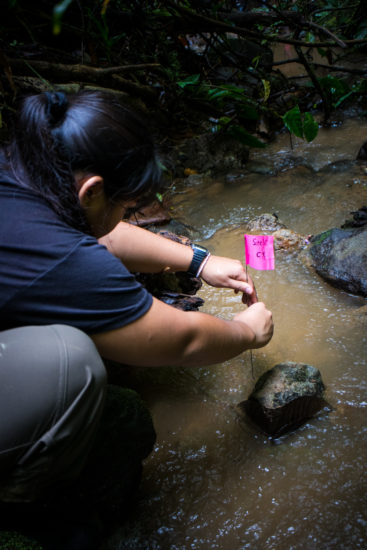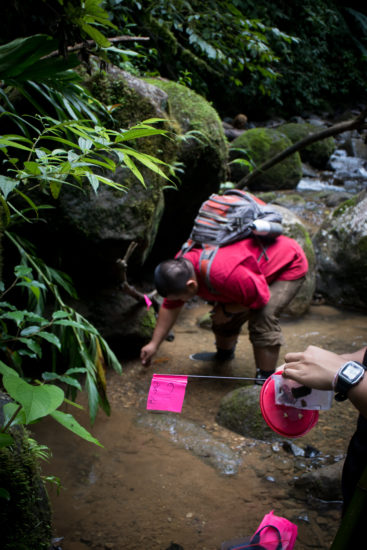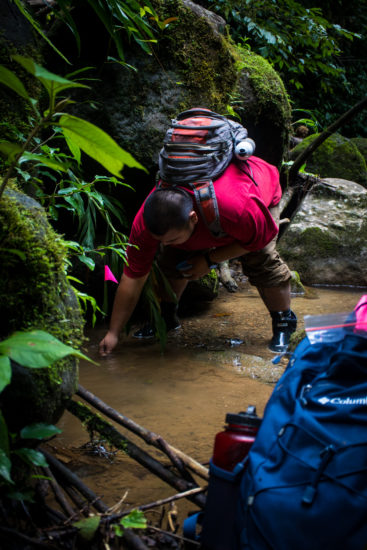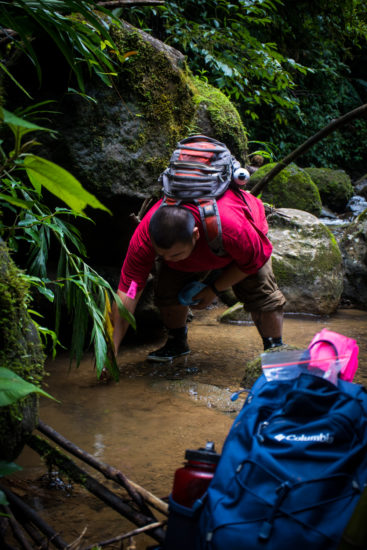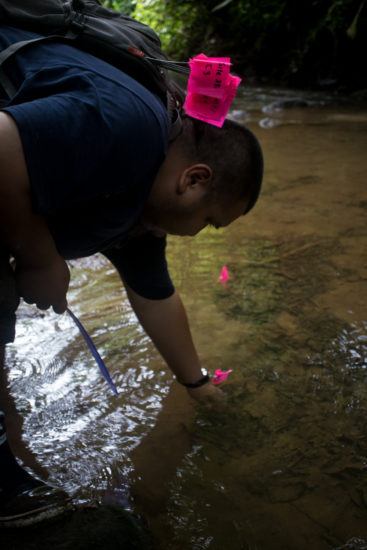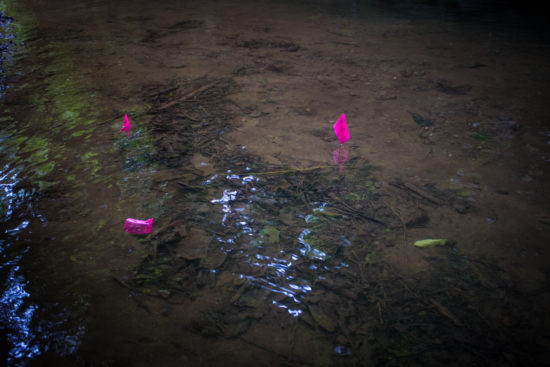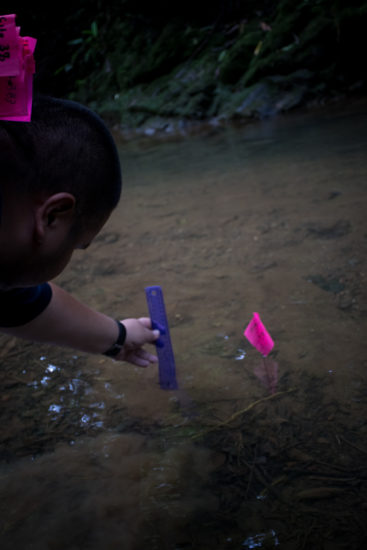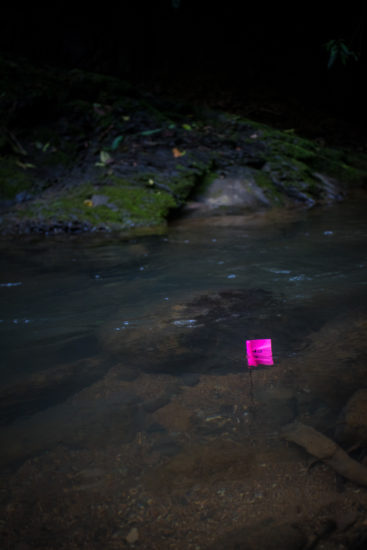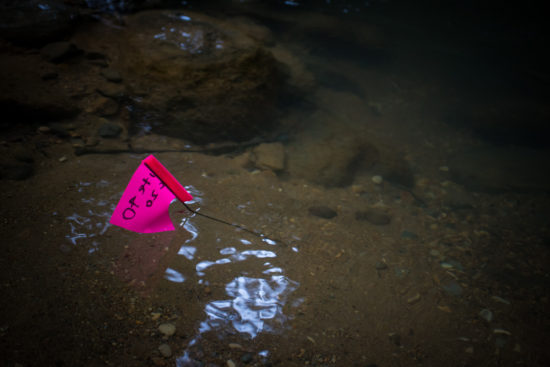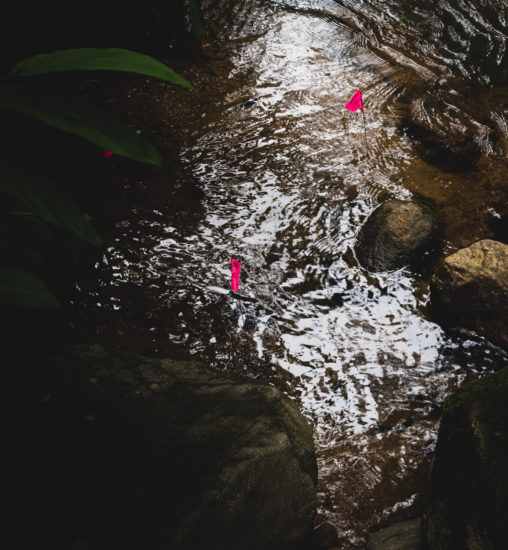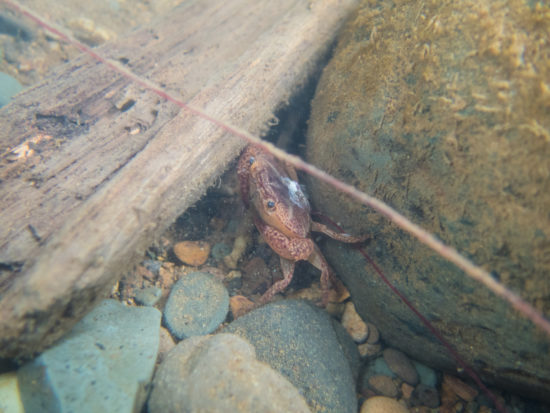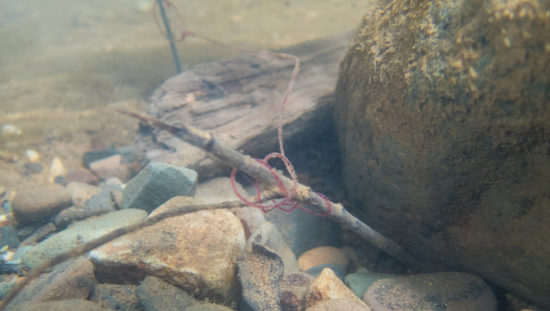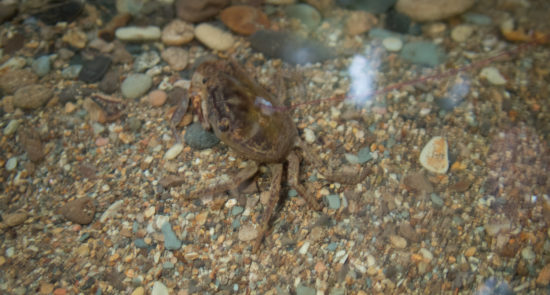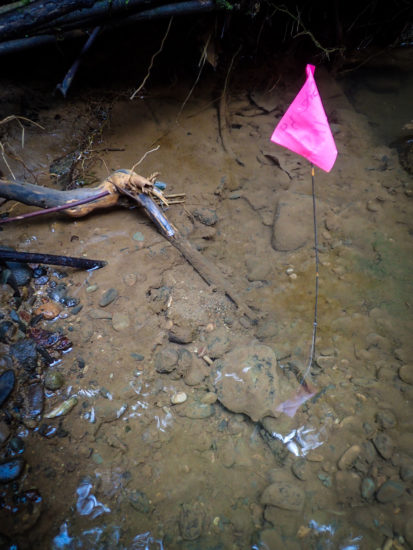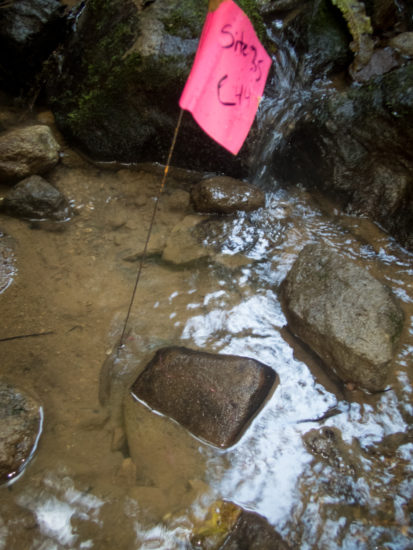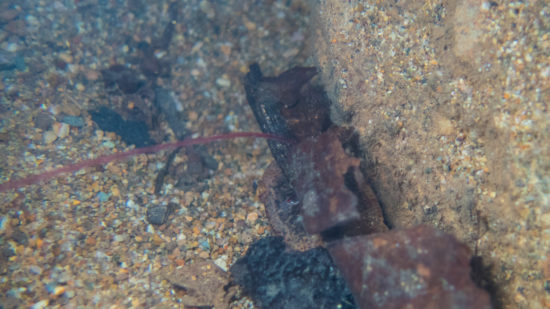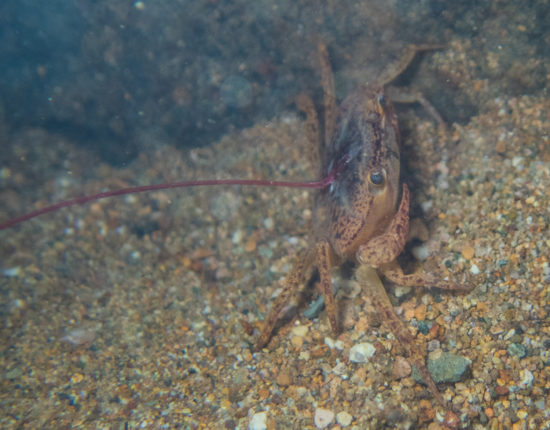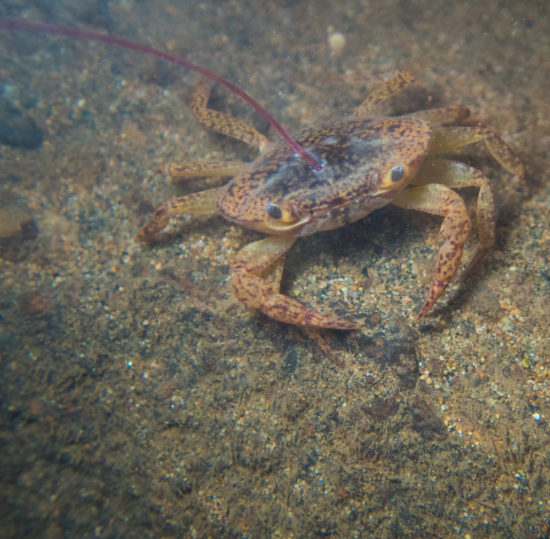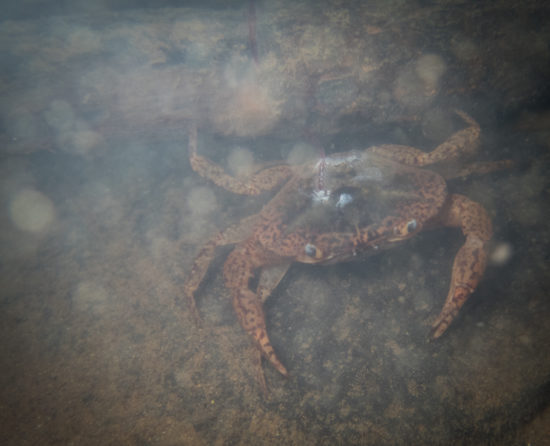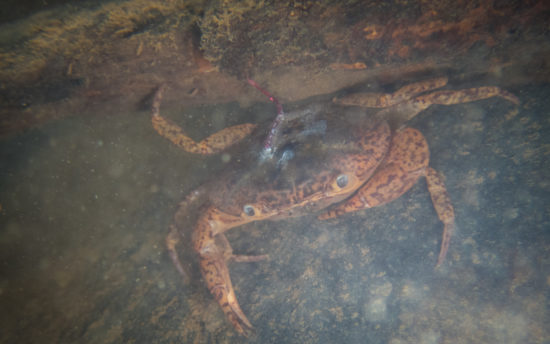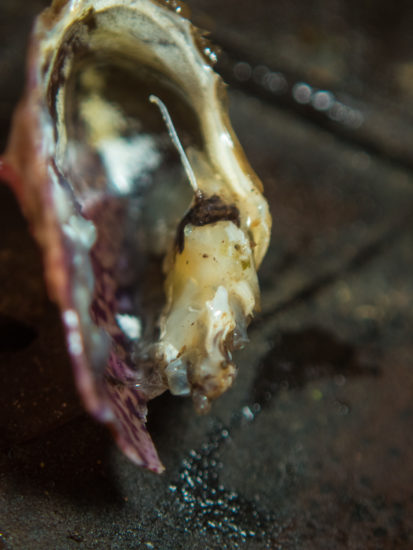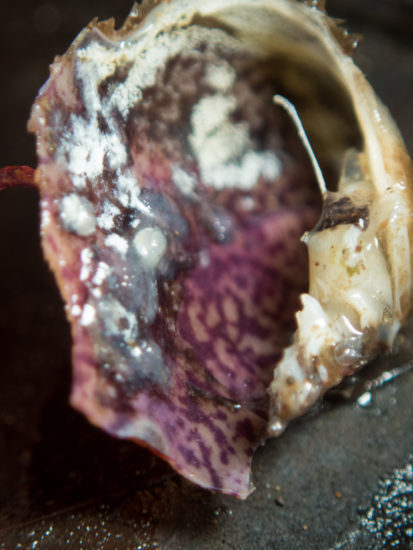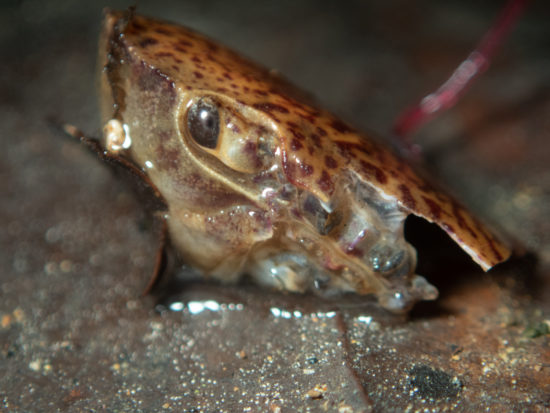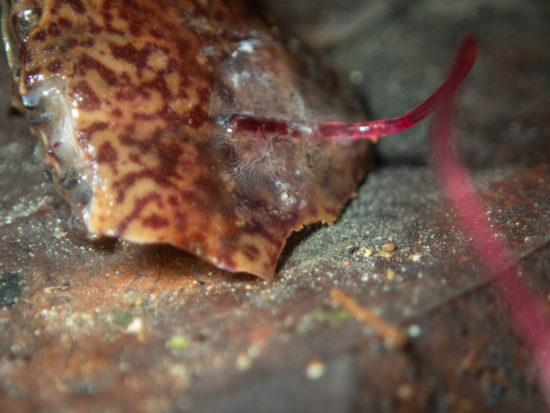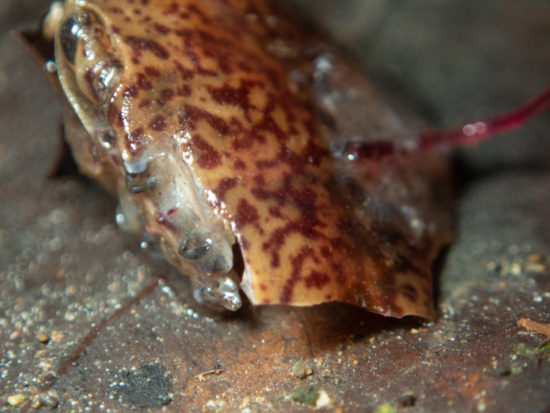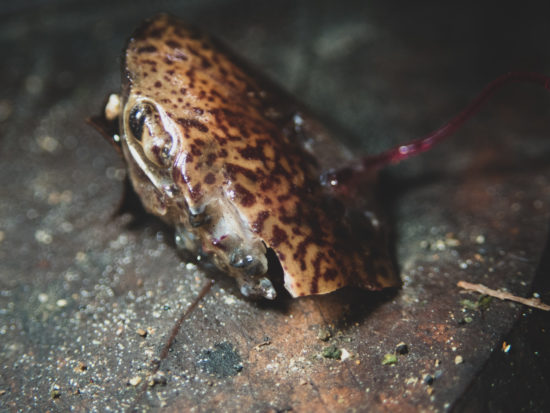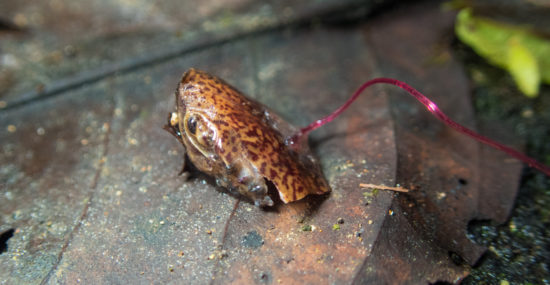As I previously mentioned, one of my students this summer, Zane, was interested in the two freshwater crabs that occur here, Allacanthos pittieri and Ptychophallus paraxanthusi, and how they may partition habitats. We find both species throughout the watershed, but it seems that the larger, P. paraxanthusi occurs in higher abundance in larger streams (i.e., the Rio Java proper), whereas A. pittieri occurs more abundantly in the smaller tributaries. This observation is a bit confounded by the lack of success we’ve had in doing mark-recapture studies (or, more generally, accurately estimating population densities). In any case, there may be some partitioning, and it could be due to a variety of factors… including predation.
While Zane started out interested in measuring crab predation risk within, at the bank, and outside of the streams to assess whether crabs may evaluate predation risk and use different parts of the stream or forest to reduce their risk (we’ve observed several individuals in the forest and on the trails!), we collected about 45 individuals—divided about equally between species. Thus, we modified the original plan: Zane would assess predation risk by species and by stream order (i.e., small, second-order streams, and a larger, third-order stream).
Crabs were tethered to monofilament line in the lab, numbered, and transported to the stream.
Some individuals had to be tethered in the field—super glue was used to tether them.
Zane and Ahmi stake the crabs into the streams with labeled flags. Crab species were pair in tethering sites.
Some habitat variables were measured, including substrate and depth of the tethering sites.
Crabs remained tethered for about nine days and were observed once a day.
And some results immediately surfaced: some crabs likely escaped by chewing the line, other lines were cleanly cut, and some damaged carapaces remained.
In other cases, parts of a missing crab were found near the tethering sites!
